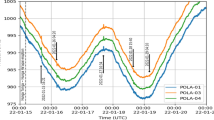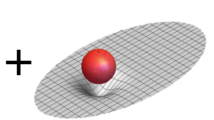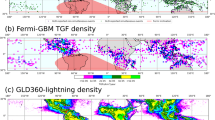Abstract
ON the morning of June 30, 1908 a meteor caused great damage in the region of the isolated trading station Vanovara in Siberia, Russia. Investigations of this meteor, called the Tunguska Meteor, have been described by Krinov1. Light from the meteor was visible even in a sunlit, cloudless sky. There was an explosive wave, with an energy between 3 and 5 × 1023 erg2, blowing down trees over an area of approximately 2,000 km2. Thermal energy, estimated to be between 1 and 2 × 1023 erg, caused fires and seared trees up to 18 km from the centre of the blast. But it appears as though the meteor never reached the ground, for no crater was formed, nor have any fragments been found which can be positively identified as part of the meteor.
This is a preview of subscription content, access via your institution
Access options
Subscribe to this journal
Receive 51 print issues and online access
$199.00 per year
only $3.90 per issue
Buy this article
- Purchase on Springer Link
- Instant access to full article PDF
Prices may be subject to local taxes which are calculated during checkout
Similar content being viewed by others
References
Krinov, E. L., Giant Meteorites (edit. by Beynon, M. M.), (Pergamon Press, London, 1966).
Zolotov, A. V., Soviet Phys. Dokl., 12, 108 (1967); translated from Dokl. Akad. Nauk SSSR, 172, 1049 (1967).
Cowan, C., Atluric, C. R., and Libby, W. F., Nature, 206, 861 (1965).
Jackson, A. A., and Ryan, M. P., Nature, 245, 88 (1973).
Ronov, A. B., and Yaroshevsky, A. A., Geochem. Int., 4, 1041 (1967); translated from Geokhimiya, No. 11, 1285 (1967).
Ferbel, T., Firestone, A., Johnson, J., Sandweiss, J., and Taft, H. D., Nuovo Cim., 38, 12 (1965).
Crannell, C. J., Crannell, H., Whitney, R. R., and Zeman, H. D., Phys. Rev., 184, 426 (1969).
Thompson, D. J., NASA/GSFC Technical Report X-662-73-179.
Anderson, D. W., Bureau, A. J., Cook, B. C., and Englert, T. J., Phys. Rev., 183, 978 (1969).
Bonazzola, G., Borello, O., Costa, S., and Ferroni, S., Nucl. Phys., 34, 637 (1962).
Tanaka, S., Sakamoto, K., Takagi, J., and Tsuchimoto, M., J. geophys. Res., 73, 3303 (1968).
Tanaka, S., Sakamoto, K., and Takagi, J., Nucl. Instrum. Meth., 56, 319 (1967).
Roedel, W., Nucl. Instrum. Meth., 83, 88 (1970).
Wogman, N. A., and Brodzinski, R. L., IEEE Trans. nucl. Sci., 20, 73 (1973).
Author information
Authors and Affiliations
Rights and permissions
About this article
Cite this article
CRANNELL, H. Experiment to measure the antimatter content of the Tunguska Meteor. Nature 248, 396–398 (1974). https://doi.org/10.1038/248396a0
Received:
Issue Date:
DOI: https://doi.org/10.1038/248396a0
Comments
By submitting a comment you agree to abide by our Terms and Community Guidelines. If you find something abusive or that does not comply with our terms or guidelines please flag it as inappropriate.



